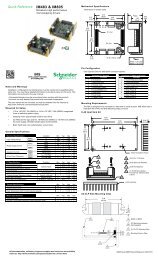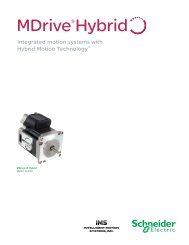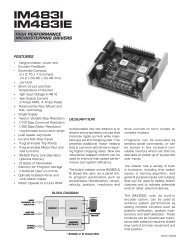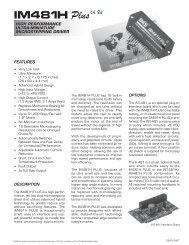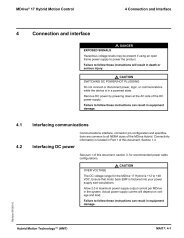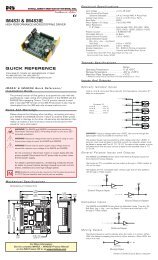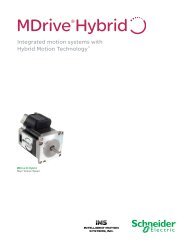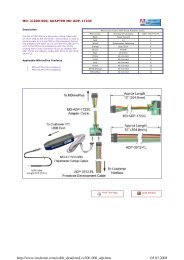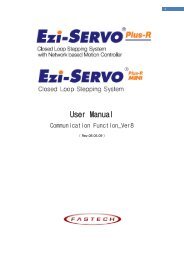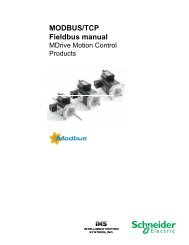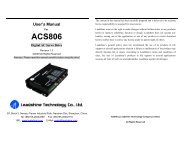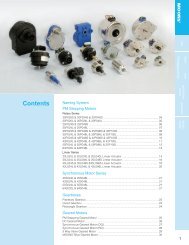MDrive 23 Plus2 EtherNet/IP - Koco Motion GmbH
MDrive 23 Plus2 EtherNet/IP - Koco Motion GmbH
MDrive 23 Plus2 EtherNet/IP - Koco Motion GmbH
Create successful ePaper yourself
Turn your PDF publications into a flip-book with our unique Google optimized e-Paper software.
V1.000, 10.2011<br />
<strong>MDrive</strong>Plus <strong>EtherNet</strong>/<strong>IP</strong> 4 Basics<br />
4 Basics<br />
4.1 Functional safety<br />
4.1.1 Working with IEC 61508<br />
Integrated <strong>Motion</strong> System<br />
Automation and safety engineering are two areas that were completely<br />
separated in the past but recently have become more and more integrated.<br />
Engineering and installation of complex automation solutions are greatly<br />
simplified by integrated safety functions.<br />
Usually, the safety engineering requirements depend on the application.<br />
The level of the requirements results from the risk and the hazard potential<br />
arising from the specific application.<br />
IEC 61508 standard The standard IEC 61508 “Functional safety of electrical/electronic/programmable<br />
electronic safety-related systems” covers the safety-related<br />
function. It is not only one single component but the entire function chain<br />
(e.g. from the sensor through the logical processing unit to the actuator)<br />
that is considered as one single unit. This function chain must meet the<br />
requirements of the specific safety integrity level as a whole. Systems<br />
and components that can be used in various applications for safety tasks<br />
with comparable risk levels can be developed on this basis.<br />
SIL, Safety Integrity Level The standard IEC 61508 defines 4 safety integrity levels (SIL) for safety<br />
functions. SIL1 is the lowest level and SIL4 is the highest level. A hazard<br />
and risk analysis serves as a basis for determining the required safety<br />
integrity level. This is used to decide whether the relevant function chain<br />
is to be considered as a safety function and which hazard potential it<br />
must cover.<br />
PFH, Probability of a dangerous hardware<br />
failure per hour<br />
4<br />
To maintain the safety function, the IEC 61508 standard requires various<br />
levels of measures for avoiding and controlling faults, depending on the<br />
required SIL. All components of a safety function must be subjected to<br />
a probability assessment to evaluate the effectiveness of the measures<br />
implemented for controlling faults. This assessment determines the PFH<br />
(probability of a dangerous failure per hour) for a safety system. This is<br />
the probability per hour that a safety system fails in a hazardous manner<br />
and the safety function cannot be correctly executed. Depending on<br />
the SIL, the PFH must not exceed certain values for the entire safety<br />
system. The individual PFH values of a function chain are added; the<br />
total PFH value must not exceed the maximum value specified in the<br />
standard.<br />
27




